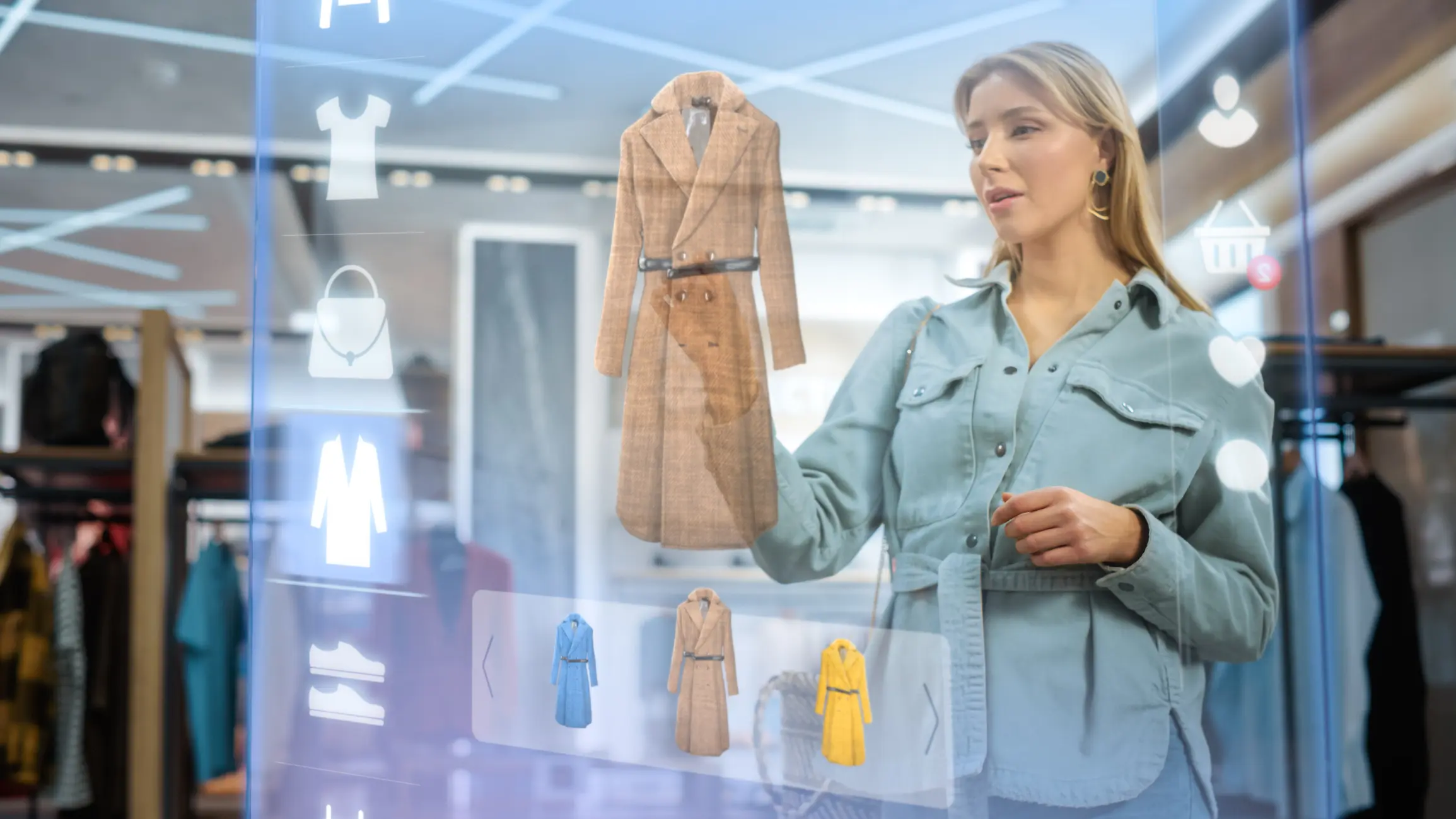6 technology predictions for retail

16 November 2023
In a fast-moving world it’s hard enough for marketers to keep up, but arguably harder for the retail sector. High streets have become moribund as consumers swap to online environments. It’s no overstatement to say retail has been completely disrupted by technology. But they’re catching up. We’ve identified 6 technology trends that are converging in the retail sector.
1. AI, Generative AI and Machine Learning
AI that uses Natural Language Processing (NLP) is able to create various types of content like text, images and audio. And AI driven NLP is certainly set to the focus of the next generation of retail technology. With the likes of Chat GPT and Google Bard, the way in which companies can create better user experiences has already been revolutionised. For example, Shopify uses generative-AI to produce product descriptions based on keyword brands in search results. Amazon is set to introduce this very soon.
2. Big Data using personal data to create more personalised experiences.
Not only does Big Data allow for a better understanding of customers, but it enables much more insightful market intelligence. Big Data analysis can help predict emerging trends, whilst helping to reduce costs for marketing and importantly, and increase the quality of customer service. Retailers are now able to leverage cloud data solutions and ecommerce data software to combine data from various channels and use analytics platforms powered by AI and ML to gain insights to make better decisions about product, price and promotion.
3. Automation
Automation is the use of technology to perform repetitive tasks without the need for human intervention. Document processing, email campaigns, inventory management and even contact form responses are just some of the things that can be performed by automation. Retail firms will certainly be increasing the ways they employ automation is more and more of their day-to-day operations.
4. AR and VR
Augmented Reality (AR) combines real world and the virtual world to create an interactive experience combining the real world with computer generated content. Virtual Reality (VR) is a fully simulated experience using computer generated content which looks and feels real, making users feel immersed in the experience. Ikea already offers this technology – using Apple’s ARKit, it lets you use your smartphone camera to place furniture items in your home, so you can visualise how they will look. This functional will continue to expand and grow. By 2024, the AR, VR and Mixed Reality (MR) market is forecast to reach over $300 billion.
5. Chatbots to improve shopping experience.
Increasingly chatbots are interacting with online shoppers exactly like an in-store sales assistant would do. Shoppers can be impatient, wanting to find and buy a product in the fewest number of clicks possible. This is precisely where chatbots can solve the problem. That’s why as of today, 80% of retailers are already using them. And these chatbots will only continue to be more ubiquitous and smarter, learning more about returning customers.
6. Headless and API-driven ecommerce
Headless architecture is effectively the separation of the front end (what you see) from the back end (what you don’t see) of an ecommerce application. The benefit of headless architecture is that – when building an omnichannel or multichannel retail experience using a traditional ecommerce platform scaling can be very complex, but with headless architecture content is served by an API, meaning retailers can get their goods to market more quickly and into new territories with much less hassle.